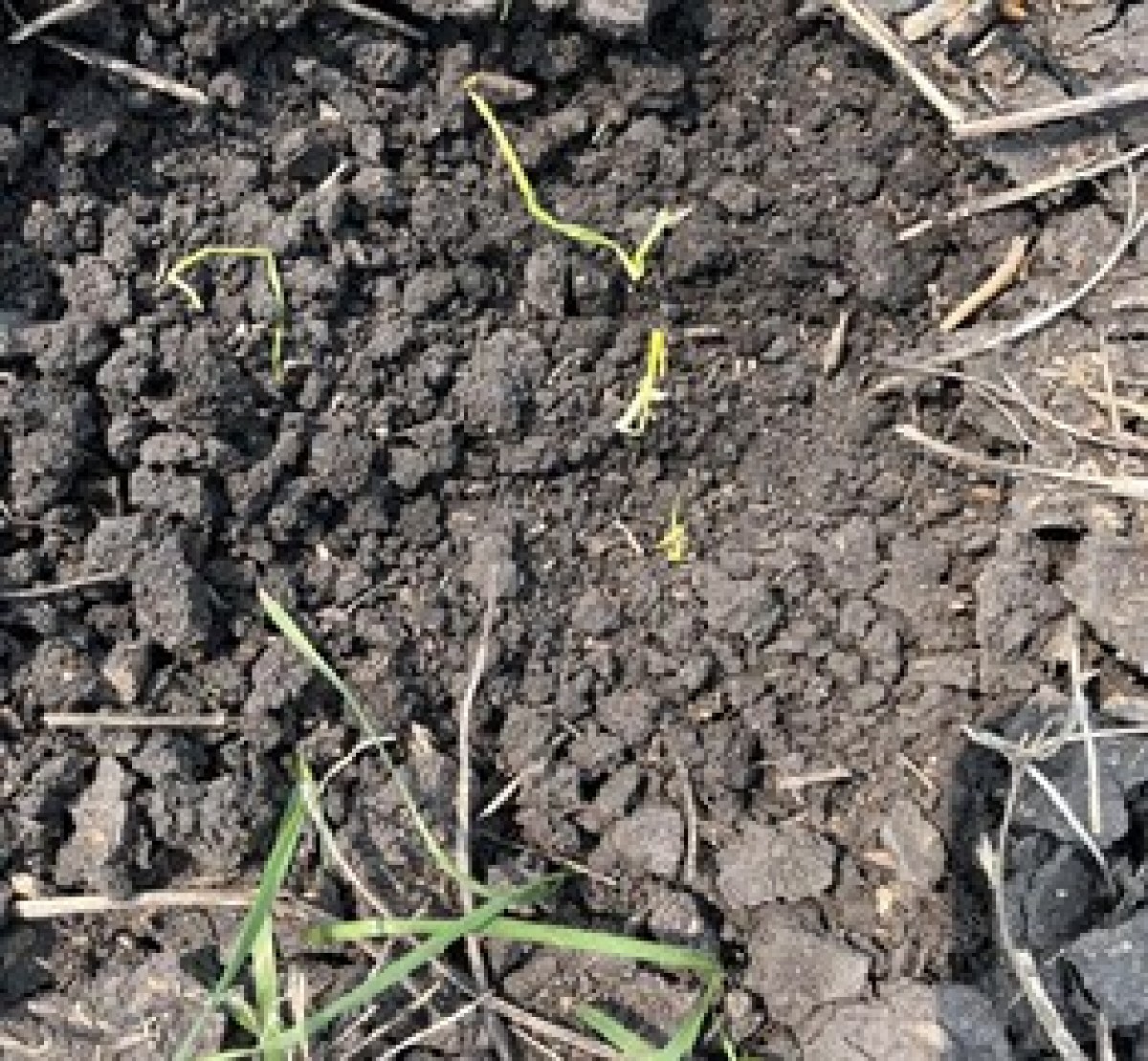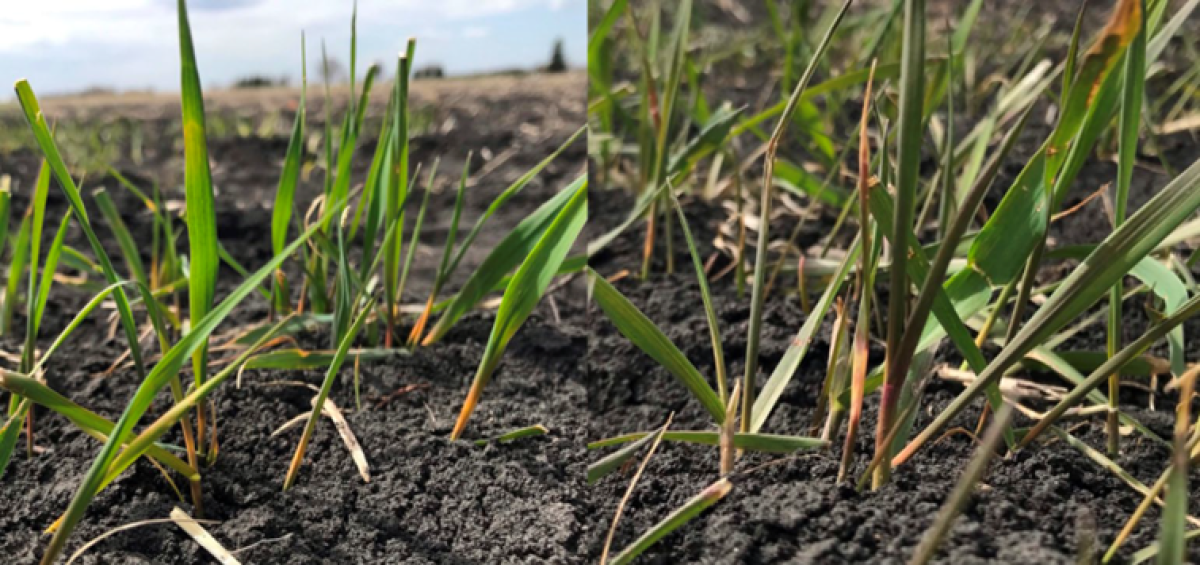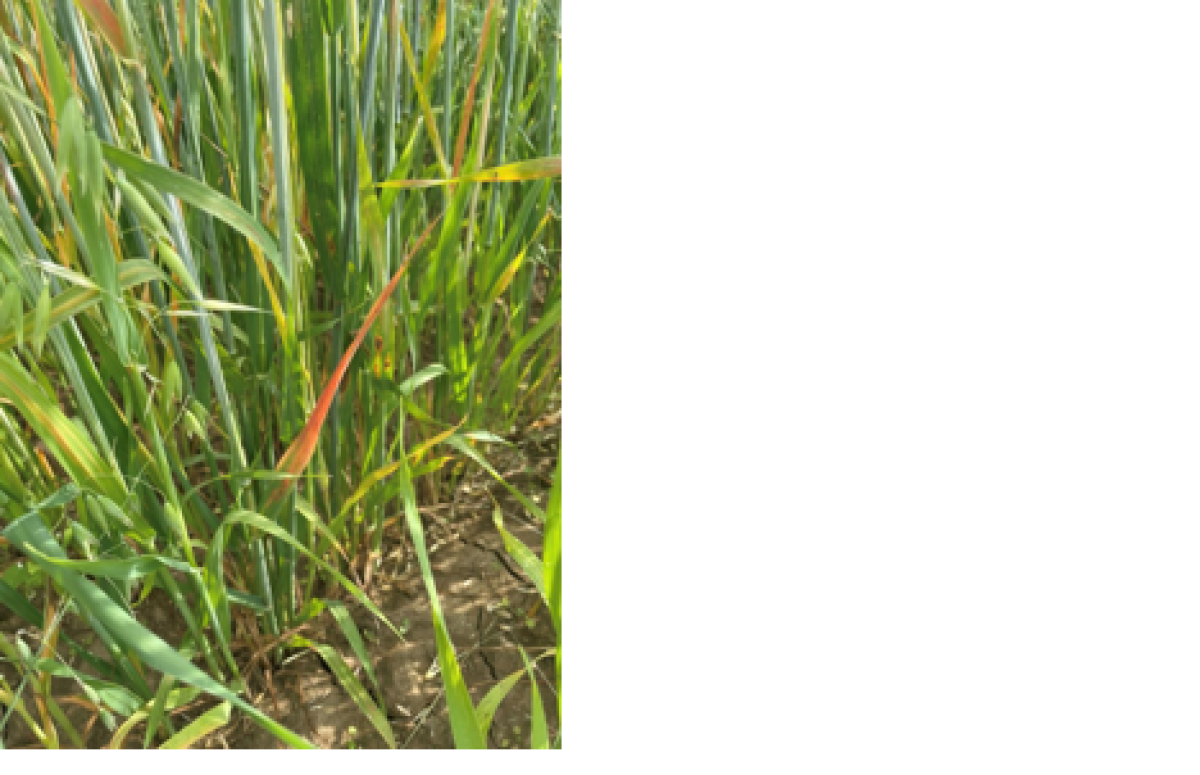Early-season crop issue diagnosis
As the crop emerges, some early-season crop issues may start to appear. Issues such as poor or uneven emergence, yellowing and stunted growth are among the most common issues. Each issue might be caused by a range of potential reasons, making correct diagnosis challenging.
In this article, we will look into the common early-season crop issues, and share some tips to diagnose them. Correct diagnosis is the first step to addressing these issues, both in-season or in the following year.
Poor or uneven emergence
Poor and uneven emergence is one of the most common issues. Though cereals can compensate for low plant stands by tillering, a low plant stand may impact the yield potential. In addition, the late tillers will be at a different growth stage from the main stems, making timing the fungicide/harvest more challenging.
The potential causes of poor or uneven emergence are:
1) Seed issues: Poor seed quality/lack of seed treatment.
- Seeds that are not viable or have low vigour may not germinate or emerge successfully. Seed testing is a great way to figure things out. Look at the germination rate, vigour and disease diagnostic profile on the seed test report to find if the seedlot has quality issues.

Figure 1. Barley seed sample showing low germination. Photo credit: 20/20 Seed Labs
2) Seeder issues: Plugged opener/uneven seeding depth.
- Missing certain rows is an indicator of plugged openers on the seeder. Seeder issues may also be reflected on poor/delayed emergence in certain parts of the seeder pass, especially on slopes. The seeder may have placed the seeds deeper/shallower than the ideal seeding depth. Seeder diagnosis and calibration can be conducted on the seeder for better seed placement in future years.

Figure 2. Research plot showing seeding depth issues from seeder calibration. Note the 4th row from the left is shorter and delayed in development compared to others.
3) Moisture issues:
Is the poor emergence found mainly in the low-lying area or the knolls?
- The low-lying areas may have waterlogging conditions, which reduce seed emergence by lack of oxygen and higher disease risks.
- If the poor emergence is mainly found on knolls, especially the eroded ones, the emergence issue is likely from a lack of moisture and soil fertility.
- In dry springs, seed sometimes germinate in different times, depending on when they get access to moisture. The earliest and latest germination may be spaced apart by a few weeks.
4) Soil crusting:
Soils with higher clay content have higher risks of forming a surface crust following heavy rain. The surface crust stops the seedlings from emerging. A timely rain may be able to soften the crust and help the seedlings to push through.

Figure 3. Soil crusting stopping cereal seedings from emergence. Photo credit: Andrew Hector, Manitoba Crop Alliance.
5) Seed/seedling diseases:
Root diseases such as root rot complex can infect the seedlings, causing patchy emergence, stunted growth and yellowing. Roots may appear darkened or decayed.
6) Seed/seedling insect pests:
Insect pests such as wireworm and cutworm feed on the seeds and/or developing seedings, causing a lower plant stand. Wireworm damage may appear patchy. If in doubt, carry a trowel and scout for wireworms.
Cutworms have been reported across Alberta. Review the live map to see where cutworms are appearing and prioritize in-field scouting accordingly.
Plants yellowing or stunted growth
1) Nutrient deficiency: Soil test reports/tissue tests.
Things to look for:
- Where does the symptom appear first, on the older leaves or the new growth?
- The plant-mobile nutrients, such as N, P, K and Magnesium, can move from the older leaves to the new growth, thus the deficiency symptoms appear on the older leaves first.
- The plant-immobile nutrients, such as Calcium, Boron, Iron and Zinc, the new growth will show deficiency symptoms first.
Soil test and/or tissue tests are great tools for more accurate diagnosis. When in doubt, collect samples from both the impacted area and the healthy area, send to accredited labs to analyze for potential nutrient deficiency.
2) Environmental stress:
- Cold stress: Cold nights with temperatures near freezing may cause yellow to purple discoloration on the section of stem close to the ground.

Figure 4. Cold banding, stem close to the ground showing yellow/purple discoloration. Source: North Dakota University.
- Heat stress: look for a yellow, constriction point on the center of a leaf. This is heat canker, a damage caused by hot soil surface. If heat and high wind occur at the same period, the leaf tissue above the canker may be broken, resulting in leaf tip death.

Figure 5. Heat canker on cereal leaves. Source: North Dakota University. https://www.ndsu.edu/agriculture/sites/default/files/2025-05/04%20CPR%20May%2015%202025Final_0.pdf.
3) Herbicide drift: Specific patterns in the field.
Field patterns and leaf symptoms are two main points to look for. Physical drift, or the movement of droplets at the time of application, is generally on the scale of tens of meters. A gradient severity may be observed depending on the distance from the boom.
On the contrary, vapor drift may move kilometers from the original field. It is caused by wind, rainfall or inversion conditions. If this is the case, leaf symptoms become more important indicators. Look for symptoms of herbicide injury, such as rolled leaves, yellow striping or bleaching.
More information on herbicide injury symptoms by herbicide groups can be found in Herbicide Action and Injury – Alberta Agriculture. To diagnose and manage spray drift, see Spray Drift Basics – Sprayer 101.
4) Herbicide carryover:
Dry condition slows the decomposition of herbicides. When the accumulated growing season precipitation is lower than 150 mm (6 inches) in the previous year, the risks of herbicide carryover damage is higher.
For cereal crops, Group 2 herbicide carryover is most common. If imidazolinone herbicides were used in the previous year, consider the possibility of herbicide carryover if the previous season was dry.

Figure 6. Interveinal chlorosis and purpling in old leaves of barley plants due to group 2 carryover damage .(Image courtesy of Eric Johnson)
5) Early-season diseases: Field history + crop rotation + environmental conditions.
Wheat streak mosaic virus (WSMV) produces dashes, streaks or yellow stripes parallel to the veins. The virus is vectored by wheat curl mites and may spread from the adjacent winter wheat fields to spring wheat.
Barley yellow dwarf virus (BYDV) is transmitted by aphids and causes yellowing and stunting. BYDV infects wheat, barley and oats. The presence of aphids, leaf discoloration and stunted plants in small patches may indicate BYDV. Before jumping to conclusions, collect plant samples and send to Alberta Plant Health Lab for testing.
Seedling blight or root rot complex may also cause yellowing and stunting of young plants. Investigate the root development and colour if suspect root rot complex.

Figure 7. Symptom of wheat streak mosaic virus. Source: South Dakota State University.

Figure 8. Symptom of barley yellow dwarf virus. Photo credit: Mike Harding.
Resources:
Spray Drift Basics – Sprayer 101
Herbicide Action and Injury – Alberta Agriculture
Guide to Early Season Field Crop Pests – Grain Farmers of Ontario
Early season yellowing of wheat and barley – University of Minnesota Extension
North Dakota State University Crop Pest Report
Nutrient Deficiencies and Application Injuries in Field Crops – Iowa State University

